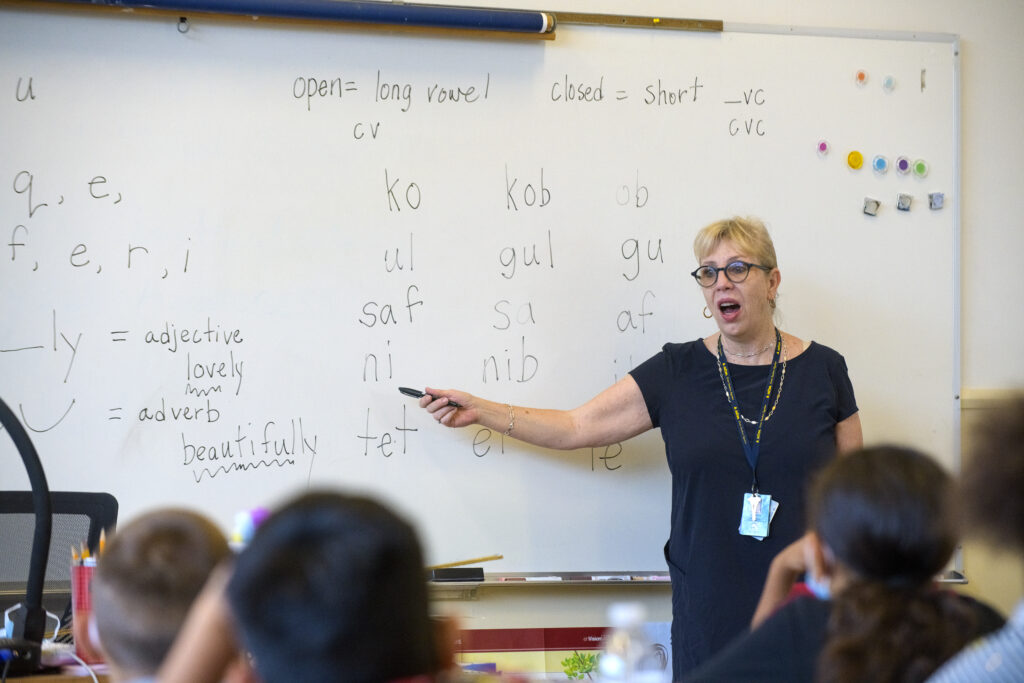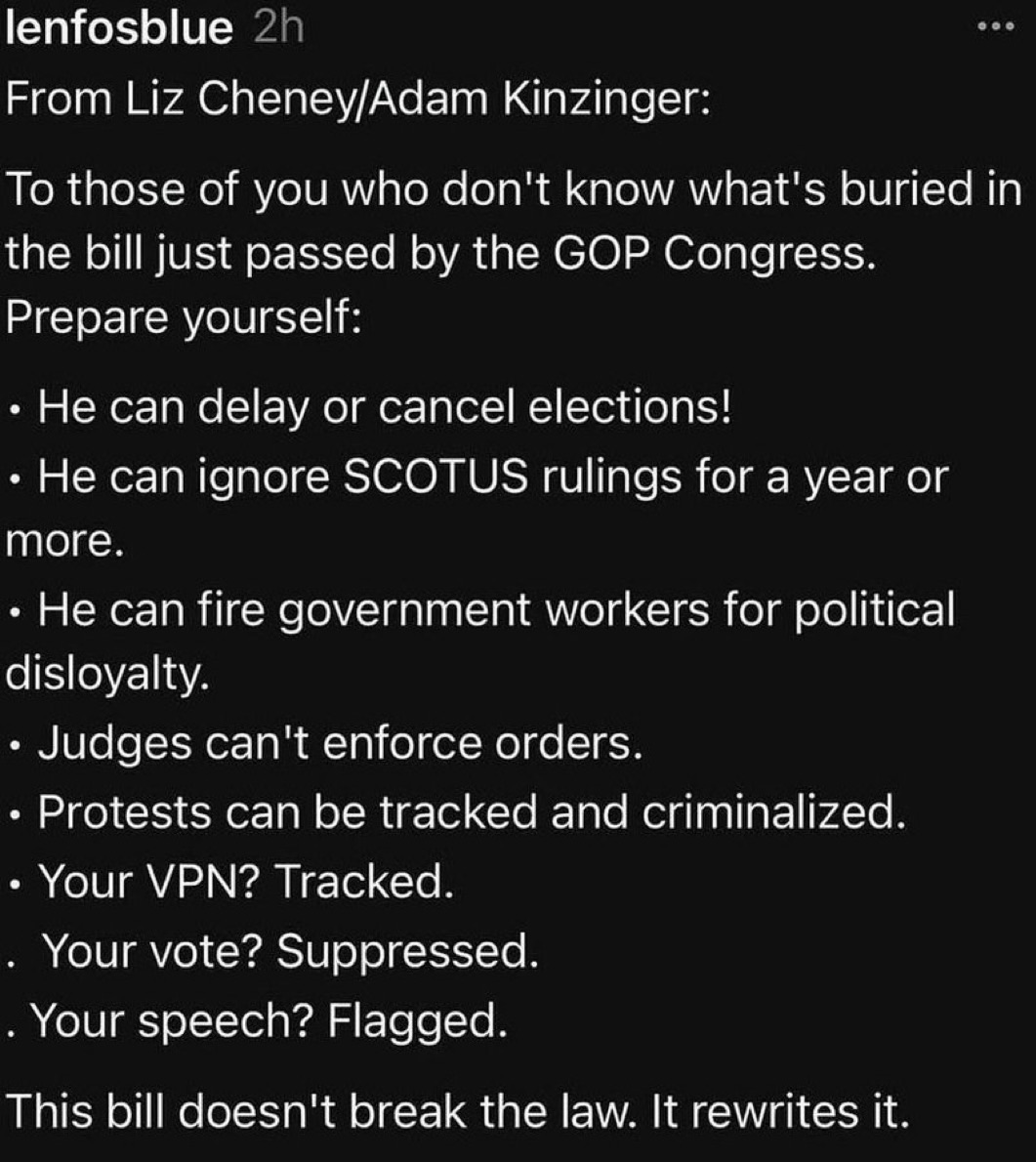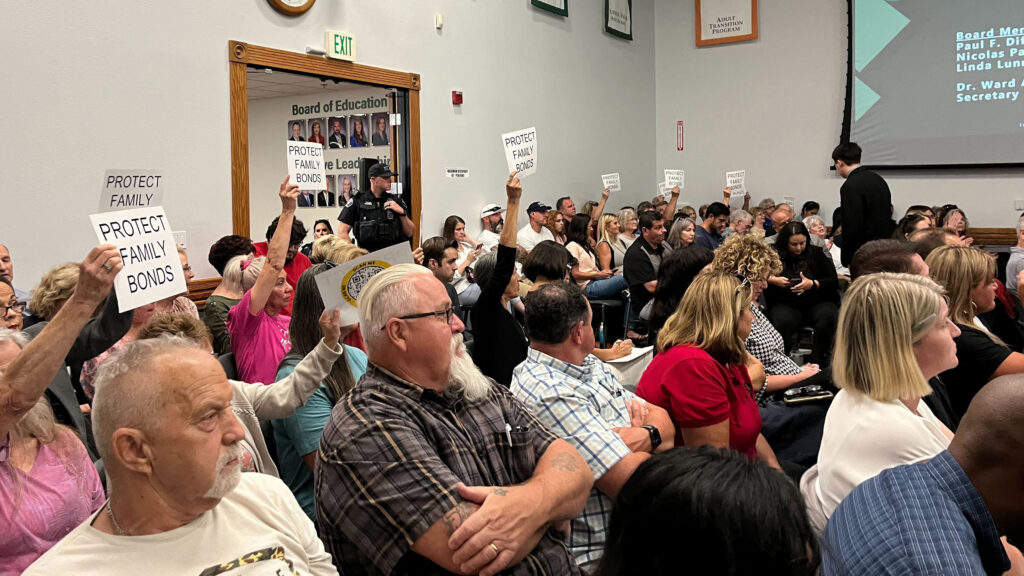Heather Cox Richardson warns about the Republicans’ “One Big, Beautiful Bill,” which cuts Medicaid and other vital services while increasing the deficit. Republicans cover up the cruel cuts to vital services by lying about them.
The Republicans’ giant budget reconciliation bill has focused attention on the drastic cuts the Trump administration is making to the American government. On Friday, when a constituent at a town hall shouted that the Republicans’ proposed cuts to Medicaid, the federal healthcare program for low-income Americans, meant that “people will die,” Senator Joni Ernst (R-IA) replied, “Well, we are all going to die.”
The next day, Ernst released a video purporting to be an apology. It made things worse. “I made an incorrect assumption that everyone in the auditorium understood that, yes, we are all going to perish from this Earth. So, I apologize. And I’m really, really glad that I did not have to bring up the subject of the tooth fairy as well. But for those that would like to see eternal and everlasting life, I encourage you to embrace my lord and savior, Jesus Christ,” she said.
Ernst blamed the “hysteria that’s out there coming from the left” for the outcry over her comments. Like other Republicans, she claims that the proposed cuts of more than $700 billion in Medicaid funding over the next ten years is designed only to get rid of the waste and fraud in the program. Thus, they say, they are actually strengthening Medicaid for those who need it.
But, as Linda Qiu noted in the New York Timestoday, most of the bill’s provisions have little to do with the “waste, fraud, and abuse” Republicans talk about. They target Medicaid expansion, cut the ability of states to finance Medicaid, force states to drop coverage, and limit access to care. And the nonpartisan Congressional Budget Office (CBO) says the cuts mean more than 10.3 million Americans will lose health care coverage.
House speaker Mike Johnson has claimed that those losing coverage will be 1.4 million unauthorized immigrants, but this is false. As Qiu notes, although 14 states use their own funds to provide health insurance for undocumented immigrant children, and seven of those states provide some coverage for undocumented pregnant women, in fact, “unauthorized immigrants are not eligible for federally funded Medicaid, except in emergency situations.” Instead, the bill pressures those fourteen states to drop undocumented coverage by reducing their federal Medicaid funding.
MAGA Republicans claim their “One Big, Beautiful Bill”—that’s its official name—dramatically reduces the deficit, but that, too, is a lie.
On Thursday, May 29, White House press secretary Karoline Leavitt claimed the measure would carry out “the largest deficit reduction in nearly 30 years with $1.6 trillion in mandatory savings.” She echoed forty years of Republican claims that the economic growth unleashed by the measure would lead to higher tax revenues, a claim that hasn’t been true since Ronald Reagan made it in the 1980s.
In fact, the CBO estimates that the tax cuts and additional spending in the measure mean “[a]n increase in the federal deficit of $3.8 trillion.” As G. Elliott Morris of Strength in Numbers notes, the CBO has been historically very reliable, but Leavitt and House speaker Mike Johnson (R-LA) tried to discount its scoring by claiming, as Johnson said: “They are historically totally unreliable. It’s run by Democrats.”
The director of the CBO, economist Philip Swagel, worked as chief of staff and senior economist at the Council of Economic Advisors during the George W. Bush administration. He was appointed in 2019 with the support of Senate Budget Committee chair Michael Enzi (R-WY) and House Budget Committee chair John Yarmuth (D-KY). He was reappointed in 2023 with bipartisan support.
Republican cuts to government programs are a dramatic reworking of America’s traditional evidence-based government that works to improve the lives of a majority of Americans. They are replacing that government with an ideologically driven system that concentrates wealth and power in a few hands and denies that the government has a role to play in protecting Americans.
And yet, those who get their news by watching the Fox News Channel are likely unaware of the Republicans’ planned changes to Medicaid. As Aaron Rupar noted, on this morning’s Fox and Friends, the hosts mentioned Medicaid just once. They mentioned former president Joe Biden 39 times.
That change shows dramatically in cuts to the National Oceanic and Atmospheric Administration (NOAA). NOAA is an agency in the Commerce Department, established under Republican president Richard Nixon in 1970, that monitors weather conditions, storms, and ocean currents. The National Weather Service (NWS), which provides weather, wind, and ocean forecasts, is part of NOAA.
NWS forecasts annually provide the U.S. with an estimated $31.5 billion in benefits as they enable farmers, fishermen, businesspeople, schools, and individuals to plan around weather events.
As soon as he took office, Trump imposed an across-the-board hiring freeze, and billionaire Elon Musk’s “Department of Government Efficiency” fired probationary employees and impounded funds Congress had appropriated. Now, as hurricane season begins, experts in storms and disasters are worried that the NOAA will be unable to function adequately.
Cuts to the NWS have already meant fewer weather balloons and thus less data, leaving gaps in information for a March ice storm in Northern Michigan and for storms and floods in Oklahoma in April. Oliver Milman of The Guardianreported today that 15 NWS offices on the Gulf of Mexico, a region vulnerable to hurricanes, are understaffed after losing more than 600 employees. Miami’s National Hurricane Center is short five specialists. Thirty of the 122 NWS stations no longer have a meteorologist in charge, and as of June 1, seven of those 122 stations will not have enough staff to operate around the clock.
On May 5, the five living former NWS leaders, who served under both Democratic and Republican presidents, wrote a letter to the American people warning that the cuts threaten to bring “needless loss of life.” They urged Americans to “raise your voice” against the cuts.
Trump’s proposed 2026 budget calls for “terminating a variety of climate-dominated research, data, and grant programs” and cutting about 25% more out of NOAA’s funding.
The Federal Emergency Management Agency (FEMA) has also suffered dramatic cuts as Trump has said he intends to push disaster recovery to the states. The lack of expertise is taking a toll there, too. Today staff members there said they were baffled after David Richardson, the head of the agency, said he did not know the United States has a hurricane season. (It does, and it stretches from June 1 to the end of November.) Richardson had no experience with disaster response before taking charge of FEMA.
Trump’s proposed cuts to the National Institutes of Health (NIH) are even more draconian. On Friday, in a more detailed budget than the administration published in early May, the administration called for cuts of 43% to the NIH, about $20 billion a year. That includes cuts of nearly 40% to the National Cancer Institute. At the same time, the administration is threatening to end virtually all biomedical research at universities.
On Friday, May 23, the White House issued an executive order called “Restoring Gold Standard Science.” The order cites the COVID-19 guidance about school reopenings from the Centers for Disease Control and Prevention to claim that the federal government under President Joe Biden “used or promoted scientific information in a highly misleading manner.” (Schools closed in March 2020 under Trump.) The document orders that “[e]mployees shall not engage in scientific misconduct” and, scientists Colette Delawalla, Victor Ambros, Carl Bergstrom, Carol Greider, Michael Mann, and Brian Nosek explain in The Guardian, gives political appointees the power to silence any research they oppose “based on their own ‘judgment.’” They also have the power to punish those scientists whose work they find objectionable.
The Guardian authors note that science is “the most important long-term investment for humanity.” They recall the story of Soviet biologist Trofim Lysenko, who is a prime example of the terrible danger of replacing fact-based reality with ideology.
As Sam Kean of The Atlantic noted in 2017, Lysenko opposed science-based agriculture in the mid-20th century in favor of the pseudo-scientific idea that the environment alone shapes plants and animals. This idea reflected communist political thought, and Lysenko gained the favor of Soviet leader Joseph Stalin. Lysenko claimed that his own agricultural techniques, which included transforming one species into another, would dramatically increase crop yields. Government leaders declared that Lysenko’s ideas were the only correct ones, and anyone who disagreed with him was denounced. About 3,000 biologists whose work contradicted his were fired or sent to jail. Some were executed. Scientific research was effectively banned.
In the 1930s, Soviet leaders set out to “modernize” Soviet agriculture, and when their new state-run farming collectives failed, they turned to Lysenko to fix the problem with his new techniques. Almost everything planted according to his demands died or rotted. In the USSR and in China, which adopted his methods in the 1950s, at least 30 million people died of starvation.
“[W]hen the doctrines of science and the doctrines of communism clashed, he always chose the latter—confident that biology would conform to ideology in the end,” Kean said of Lysenko. He concludes: “It never did.”
















